Photography courtesy of Lowell Washburn, all rights reserved.
“Have you thus sat on a snowy day and squinted through the white curtain at those mail-carrying bluebills? Until you have courted bluebills in the snow, you have not tasted of the purer delights of waterfowling.” — Gordon MacQuarrie, Outdoor Editor, Milwaukee Journal
_______________________________________________
Gordon MacQuarrie first penned those words in November 1937. In the 85 years that have passed, no one has ever written a better description of the exhilaration derived from gunning for bluebills in the midst of a late season snowstorm.
In the wide and varied world of waterfowling, few sights can match that of a tightly bunched flock of low-level, high-speed bluebills as they suddenly emerge from the screen of a whiteout snow squall. That was exactly the brand of pulse pounding action recently enjoyed by area duck hunters when a mid-November snowstorm turned the North Iowa countryside into a postcard winter landscape.
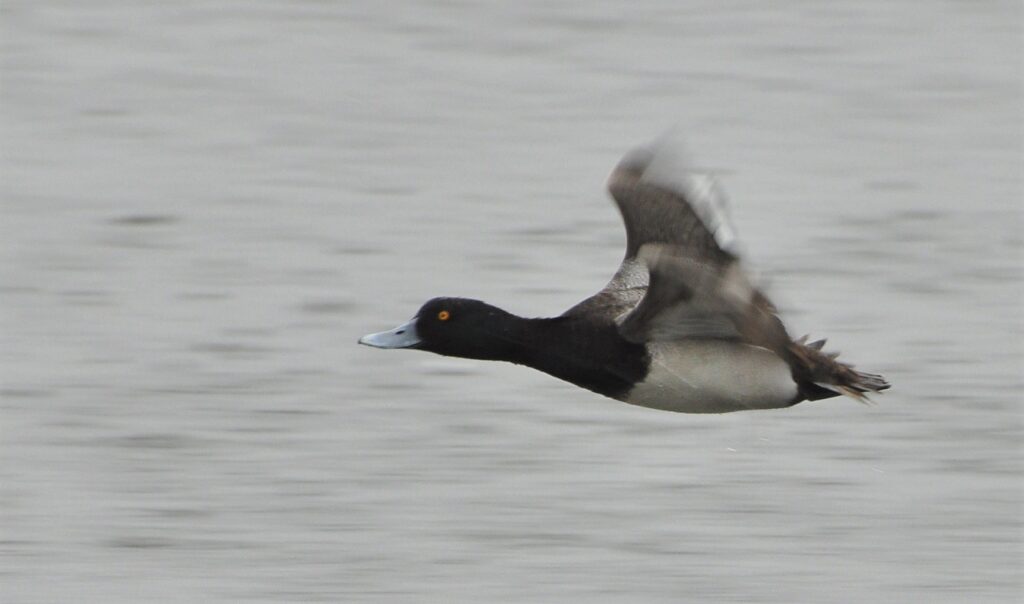
For many hunters, the action became spectacular; providing the best outings of the season as flock after flock of migrating bluebills — more properly known as lesser scaup — poured into the decoys. Although the migration occurred statewide, the most dramatic hunts were enjoyed by hunters on our largest inland lakes and on the Mississippi river. A friend who lives near Davenport told me that a party of 17 hunters on the ‘Big River’ had all shot “easy limits”. That’s a lot of ducks. The migration reached insane proportions as birds continued to pour down the river, and was the most incredible flight the hunters had witnessed in many years.
Although that perfect mix of calendar dates, wind and snow may only align once every few years, the epic migrations they trigger provide lifetime memories for those fortunate enough to secure a ring side seat to the main event. Some of my most memorable snowstorm hunts occurred at Clear Lake during the late 1960’s when scaup populations were much more plentiful. During the peak of the migration wave after wave of storm-tossed bluebills would descend on the lake. Great rafts would gather in the middle of the lake and when disturbed by wind and eagles, the rising flocks would resemble distant swarms of insects.
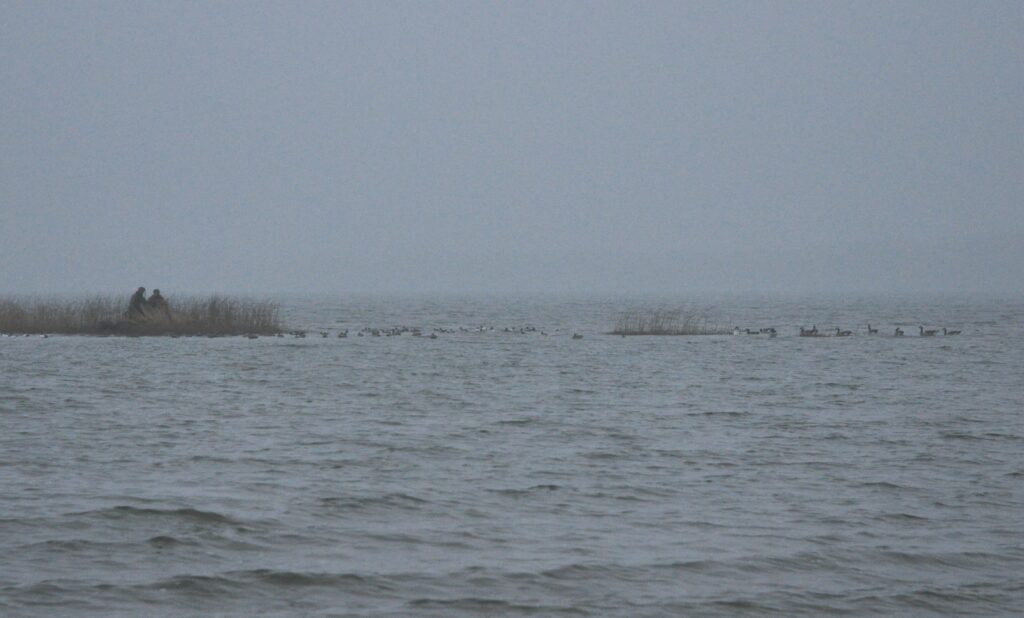
One of my best and most unusual snow day memories occurred at Winnebago County’s Rice Lake. By the time daylight approached, driving winds and heavy snowfall had made conditions too dangerous for launching a boat. A number of other frustrated hunters were already kicking tires at the lake’s north boat ramp, and I joined the group. Despite the heavy snowfall, we soon began to see flocks of ducks passing by and everyone felt down and out over the missed opportunity of what had the makings of a spectacular outing. But then someone suddenly came up with the idea that, instead of going back home, we should just hunt from the parking lot. Everyone grabbed a section of their grass boat blinds which we quickly hung from stakes at the shoreline of the gravel lot. Crazy as it was, the ducks fell for our hokey setup and the first flock attempted a landing while the decoys were still being tossed. It was a sight to behold as a steady parade of mallards and flocks of bluebills appeared through the snow. The birds wanted out of that storm and the flocks decoyed as tame as September teal.
I had the only dog that day, a straw-colored Chesapeake named Queen. Our impromptu hunting party contained seven gunners and they were keeping the Chesapeake plenty busy. Queen had just returned with a duck when an incoming flock of around 30 bluebills appeared through the gloom. When we opened fire, a number of birds hit the water. On the third or fourth retrieve, we all received a big surprise when Queen handed me a beautiful long-tailed duck.
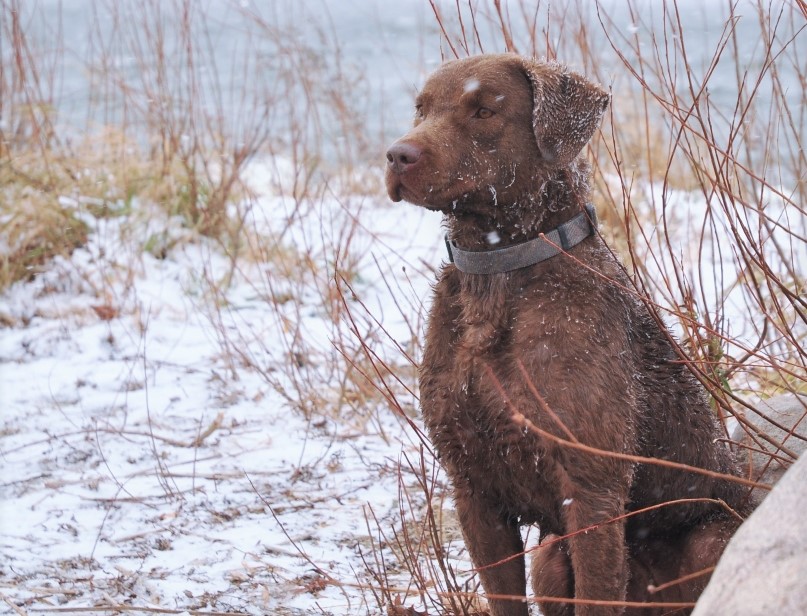
Formerly known as oldsquaw, the long-tailed duck is an arctic nesting species whose primary wintering grounds are located along the northern coastal regions. Wintering flocks often stay beyond sight of land and the deep diving sea ducks have become entangled in fishing nets set at depths exceeding 150 feet. The off-course bird was the first long-tailed that most of us had ever seen. The stories of snowstorm duck hunts could go on and on.
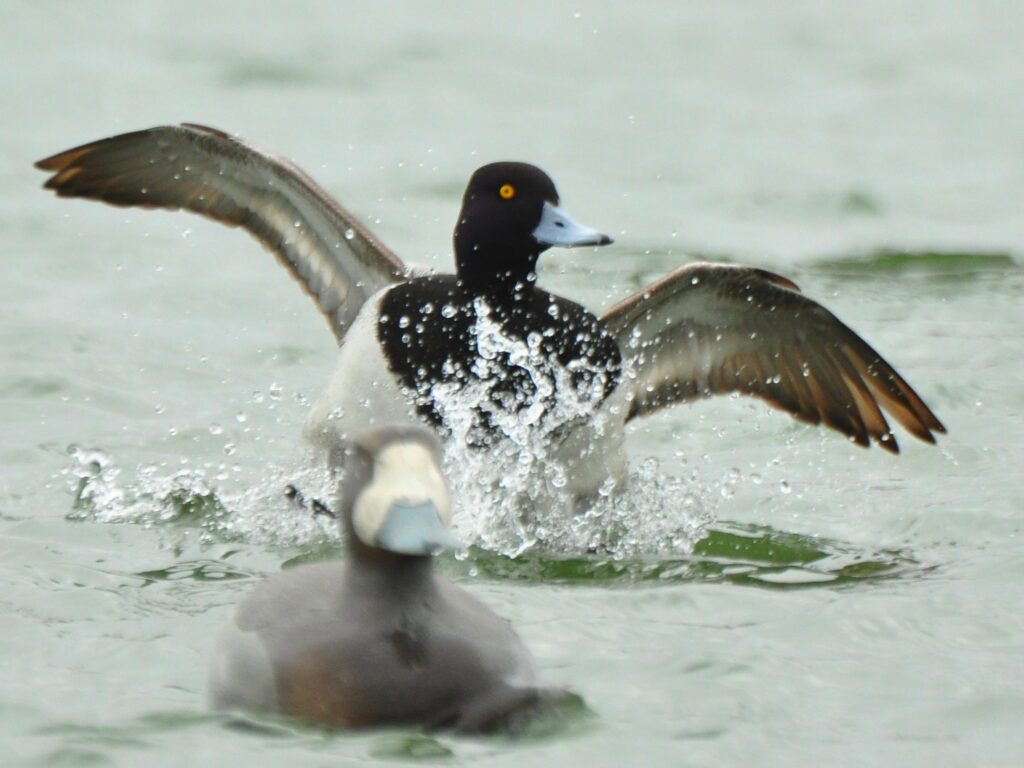
Although I’ve always held the bluebill’s power of flight in great esteem, I really didn’t understand just how far and how fast the birds can travel until I visited Alan Afton’s scaup research project. A former professor at Louisiana State University, Afton served as chief coordinator for the multi-state, five-star study aimed at examining the biology and unexplained decline in scaup numbers.
Headquartered on the Mississippi river at Keokuk, much of the project’s focus centered on migration staging areas in southeast Iowa. Over the course of several days, more than 4,500 scaup were live trapped and banded. Before release, twenty-six of those ducks — all females — were implanted with satellite transmitters which allowed scientists to monitor their movements and survival from space.
Upon leaving Iowa in late March, most of the radioed scaup traveled to nesting grounds in the boreal forest zones of extreme northwest Canada and Alaska. When fall arrived, the surviving hens headed back south.
Two of those ducks conducted exceptionally noteworthy fall migrations. Satellite trackers recorded one of those hens [radio number 80897] sitting on Devil’s Lake, North Dakota on November 14. The bird apparently felt the sudden urge to travel, and was next reported on November 17, sitting on an inland lake in south central Cuba. The three-day flight covered an incredible straight-line distance of 2,100 miles. Ducks don’t travel in straight lines, of course, and the actual distance could have been much greater.
Equally incredible, was the flight of a second female reported in North Dakota on November 13. On November 16, satellites discovered the duck resting on Cuba’s north shore. Three days later, the bird had joined the first hen on the same southern inland lake. Amazing!
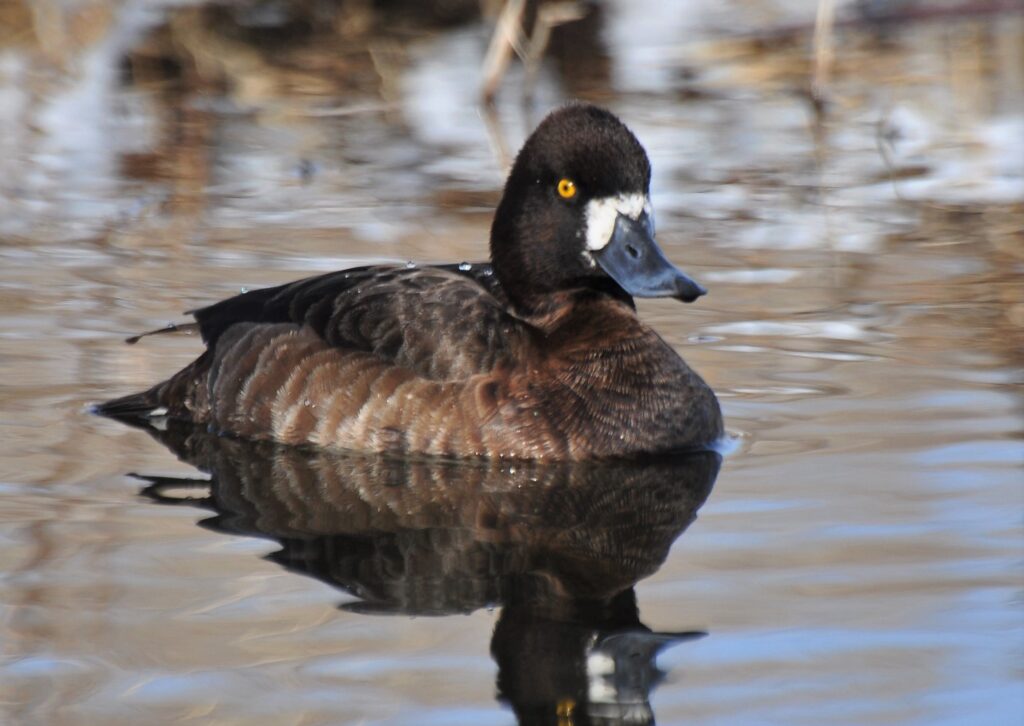
As the fall migration led both hens on a southeasterly course, it is all but certain those birds passed through Iowa. You may even have seen one of them fly by as you sat shivering in your blind.
It’s now late season 2022, and Iowa wetlands are icing over. Another open water season is drawing to a close and swarms of southbound bluebills are once again moving across Iowa. Whenever we enjoy the good fortune of having a low-level flock sizzle past our decoys, it’s only natural to wonder if the birds will remain in the area long enough that maybe, just maybe, we might see that same bunch again tomorrow. If those two radioed hens offer any indication; then the only logical answer is – Give it up. The flock we saw this morning could already be crossing the Arkansas border.

 Susan Judkins Josten
Susan Judkins Josten Rudi Roeslein
Rudi Roeslein Elyssa McFarland
Elyssa McFarland Mark Langgin
Mark Langgin Adam Janke
Adam Janke Joe Henry
Joe Henry Sue Wilkinson
Sue Wilkinson Tom Cope
Tom Cope Kristin Ashenbrenner
Kristin Ashenbrenner Joe Wilkinson
Joe Wilkinson Dr. Tammy Mildenstein
Dr. Tammy Mildenstein Sean McMahon
Sean McMahon